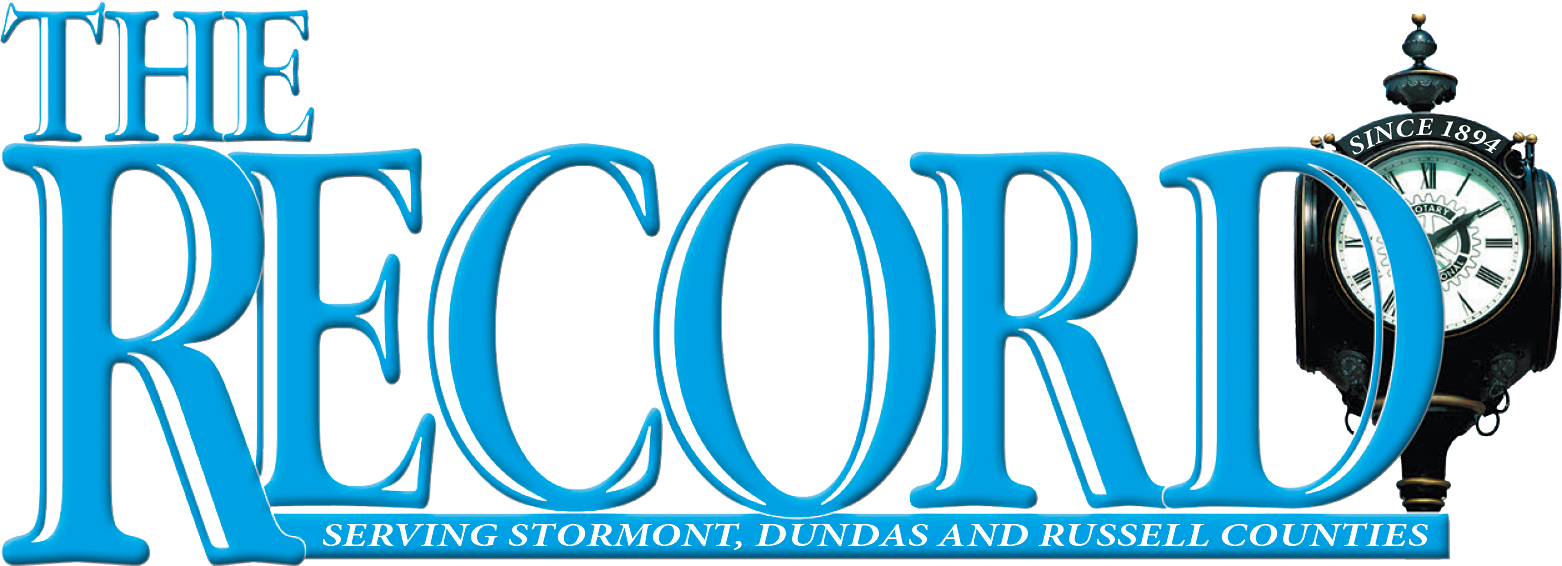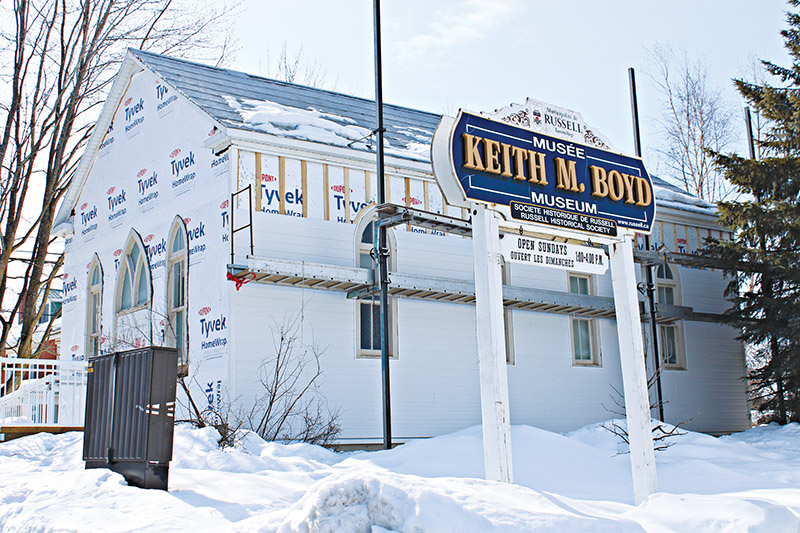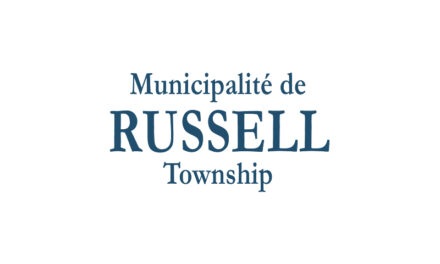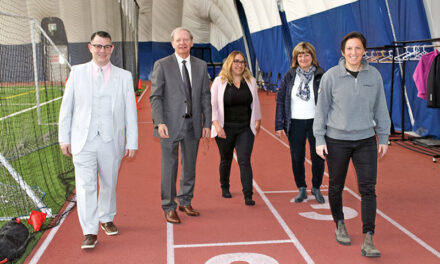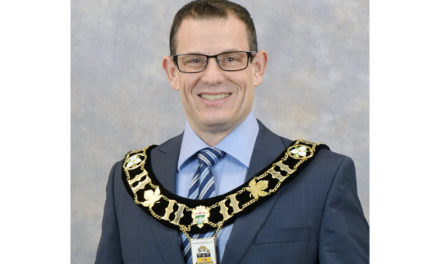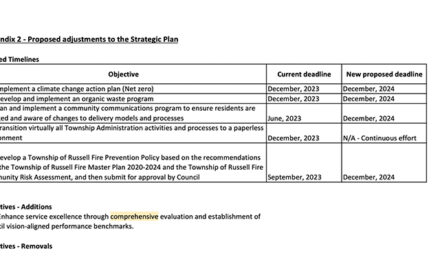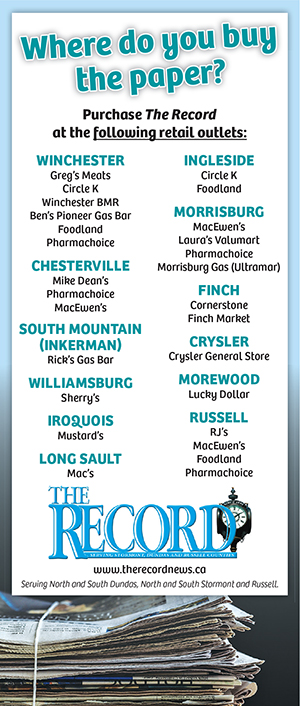The Keith M Boyd Museum provides Russell residents and visitors to the community the opportunity to learn about this history of this Eastern Ontario community. The Church Museum, pictured behind the museum sign, has served its community in various capacities since it was built in 1856. Thompson Goddard Photo
RUSSELL – Since the late 1980’s the Russell Village and District Historical Society (RVDHS) has been ensuring the stories of the Municipality of Russell are preserved and promoted for residents and non-residents alike. Harry Baker, chair of the Society, explained how Keith Boyd and Wendall Stanley worked together to form the Society, with the Keith M Boyd Museum opening in September 1989. Baker continued that Stanley wrote a comprehensive history of Russell Village entitled “From Swamp and Shanty” in 1987 with Boyd’s artifacts, many provided by residents, forming the basis of the museum’s collection. The RVDHS collection is housed at the Keith Boyd Museum, with artifacts and historical documents currently located in two buildings called The Church Museum and The Firehall Museum.
The Church Museum is a former Anglican Church with a long history of community use. It was built in 1856 and is described on the RVDHS website as the “oldest surviving public building in Russell Township.” It was eventually moved to its present location at 1150 Concession Street in the Village of Russell after being purchased by the township of Russell.
The building which houses the Fire Hall Museum served as the community Fire Station between 1971 and 2005. In 1953 the first building on the site, the original old Methodist Church which was moved there from Loucks Cemetery, was demolished after serving the community in a variety of ways since 1867. In 1971 the fire hall was constructed and in 2005 was acquired by the RVDHS for housing some of the larger artifacts such as milk wagon, a restored 1952 Maple Leaf Pumper Truck used in the community as well as a sports display, a general store and information on the New York Central Railway.
When asked, Baker explained the role of the RVDHS is to tell and promote the history of the people and the businesses of Russell Township. He continued the Society, as the only organized historical group in the municipality, is seeking greater collaboration with the communities to the east of Russell village such as Embrun to preserve and promote the municipality’s entire history.
Baker mentioned the Society is working with different organizations in the community including research to assist those who are investigating a different namesake for Russell, as well as establishing relationships and providing information on past Indigenous communities. The Society will also assist as needed in the consideration of a Heritage Conservation District by the township of Russell.
The Russell Kin Club is planning to construct a new “Welcome to Russell” sign using bricks made in Russell as its base. Baker explained one of the Society’s projects is assisting in the acquisition and storing of these local bricks until they are needed. The bricks made in Russell were transported by rail to many locations including Ottawa, Montreal and into the US. Many were used in the construction of buildings in the Chesterville area where they were used in the construction of the original portion of Holy Trinity Anglican Church.
During the COVID-19 restrictions, Baker mentioned the Society has been busy making heritage videos, which are available on YouTube by using the search term “Russell Historical Vignettes.” The vignettes feature information on the history including segments on local doctors, dentists, and the New York Railway.
The Society, in collaboration with the township of Russell, have installed four historical plaques with two more planned for 2021. The program seeks to provide information on the history of the township with plaques of significant events, buildings, or property in the community. Going into the future, it is hoped that through the Historical Plaque Program, residents and tourists alike will receive a sense of where the community began.
Four plaques, which include bilingual text and a photo, highlighting the Great Russell Fire in 1915, the Carscadden Bridge, St. Andrew’s and St. Paul’s United Church Cemetery and the Church Building Museum have already been installed. More detailed articles about each plaque can be found on the Township and Museum website. Baker explained two plaques telling the story of the Russell Brick Plant and the Russell Station of the New York Central Railway and the associated industrial complex are planned to be unveiled in the fall.
It was clear from speaking with Baker, the deep affection and esteem he feels for the community he calls home. He proudly explained how Society volunteers have worked to ensure the stories of this rural community will be available to the public. People seeking genealogical information on their ancestors or for those wishing to learn about life in a rural community, a visit to the museum complex in Russell Village or listening to the vignettes on YouTube will provide a peek into the past and an opportunity to build a pathway to the future on the firm foundation of history.
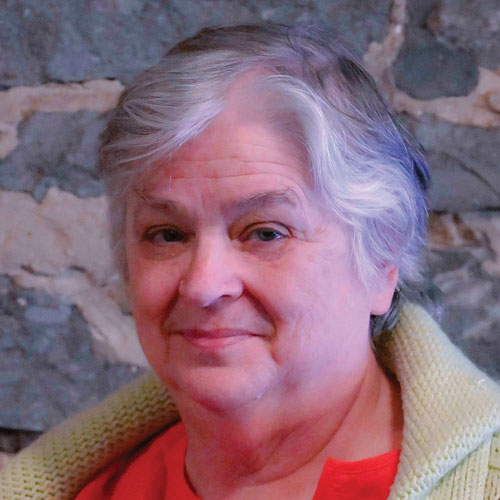
Carolyn Thompson Goddard, grew up in Chesterville and attended North Dundas District High School. After completing her BA in Political Science at Carleton University she has worked as a medical secretary and library technician. In 2020 she graduated from Algonquin College with a diploma in Journalism and has been a reporter and column writer for The Chesterville Record for over 10 years.
